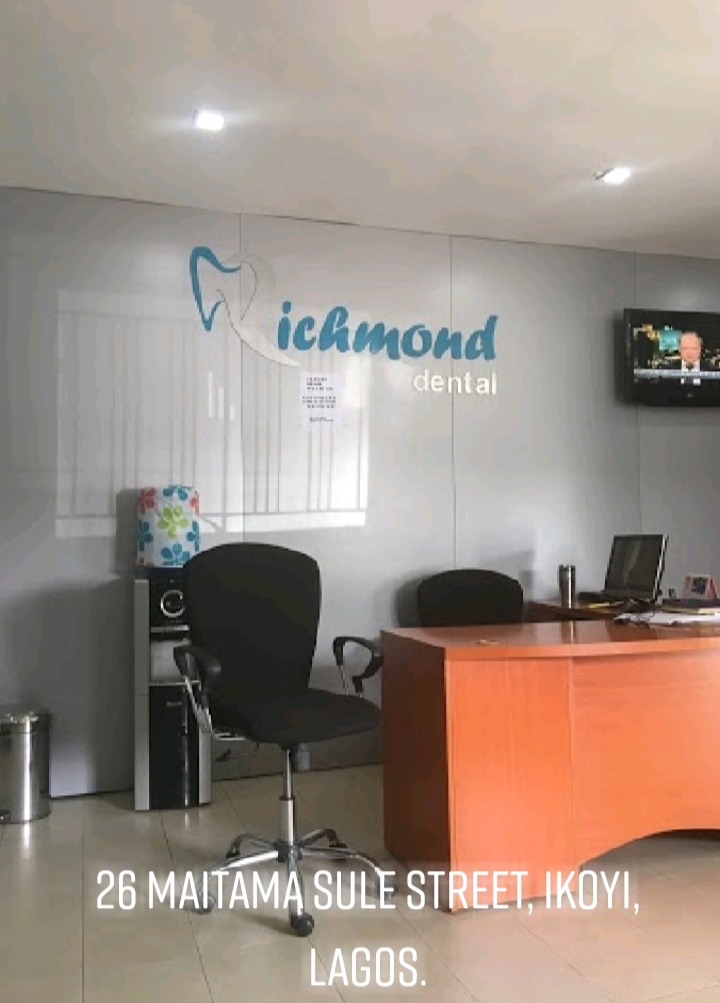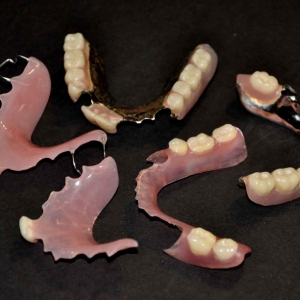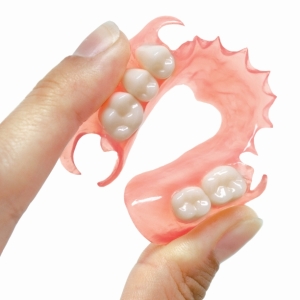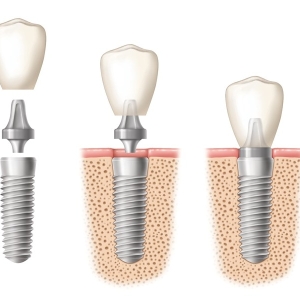It may not have mattered in the past if people lost their teeth, especially those in the front, but it doesn’t mean that attempts weren’t made in the past to replace missing teeth, as archeological evidence suggests that indeed people in antiquity did wear “fake” teeth, and even before dentistry became a profession in the real sense of it, many acted on their behalf, even going as far as replacing missing teeth.
In todays’ world where IMAGE is everything, a slight fracture on a tooth is a huge downer talk more space in the mouth (especially in the front) where a tooth or teeth once sat. There are several reasons why a tooth could be lost or removed either at a DENTAL CLINIC or outside of it, but once a tooth has been deemed fit to go by a dentist, or knocked off following trauma or the likes, it behooves on the person to ensure that s/he gets it replaced, if not for any other reason, aesthetics.
The options for replacement are varied, but can basically be grouped into the REMOVABLE and the FIXED replacements. The removable replacements are the dentures that are quite popular, and even if you aren’t wearing one, you’d know someone who’s wearing one. Very well done dentures worn by a very discreet person isn’t one that you’d discover easily though (without doing you some 007 on them).

Until very recently, especially in Nigeria NON-FLEXIBLE DENTURES were it for Removable Replacements. So that they wouldn’t fracture (as they were wont to eventually) during mastication, they (the plastic/acrylic ones) are made to be slightly bulky, especially when tooth/teeth replaced is/are back/posterior/chewing teeth. These plastic or acrylic ones, considered as Temporary Dentures sometimes are used by many as the main replacement option, while very few go for dentures with metal bases. Though, once a denture wearer gets used to using a denture it feels less cumbersome in the mouth. A one tooth denture will cost about =N=20,000, with additional teeth costing about =N=6,000/tooth at private dental clinics in Nigeria, while at government funded dental clinics, it may go for even less than half the price charged by Private clinics. Very few dental clinics make metal dentures, and these are far more expensive and suitable for people who have lost many teeth.

The newer and better option for the plastic Removables is the VALPLAST or FLEXIBLE DENTURE with better retention. It is thinner (hence not bulky), and rather than succumbing to pressure by breaking, “bends” to accommodate the pressure, returning to shape once the pressure is removed. Many Valplast wearers, especially those who had used the non-flexibles before, attest to how they can hardly feel the Valplast in their mouth while going about their normal chores, even chewing, unlike the situation with the other (non-flexible dentures). It used to be the norm to use plastic dentures till one was financially buoyant enough to get Fixed Replacements, but many denture wearers who could afford the fixed today opt for Valplast permanently. For people who have lost most of their teeth, or even all, Valplast is so far better than most of the options out there, besides being relatively less expensive. You may not find public dental clinics in Nigeria, offering Valplast, as most of their in-house dental laboratories do not have the equipment for it, as private laboratories do. Valplast therefore costs about =N=70,000 for a tooth, while additional teeth costs an extra =N=10,000/tooth. I am aware also of labs that charge a fixed prize for whatever number of teeth you want on a Valplast, and some of the dental practices patronizing such labs also have fixed prices for their Valplast irrespective of the number of teeth to be replaced.

For Fixed Replacements two types suffice, namely BRIDGES and IMPLANTS. A Bridge involves the preparation of teeth (by trimming/drilling off a bit of the tooth to reduce the height and width by a few millimetres, so that the resultant crown will become the exact size of the teeth, not bigger) adjacent to the space where a tooth is missing to carry crowns (tooth-shaped sleeves made of porcelain or metal or a combination of both that is placed over teeth), while a crown is made to float right above the space where a replacement is meant for. These crowns are attached together, with the arms cemented to the prepared adjacent teeth/abutments (in the case of replacing one missing tooth for instance), while the one in the middle sits over the space where a tooth was lost. Many times, the success of a bridge depends on the length of span, with shorter spanned bridges (as with replacing a tooth) tend to do better than long spanned ones (with say two or more teeth to be replaced, which means also an increase in number of teeth to be used for abutment), the merit over the Removables though is the fact that it doesn’t have to be removed to clean or when one is about to sleep. Over time though, it may begin to rock a bit, or fall off (but that isn’t without the “rocky” premonition), which will require a visit to the dentist for review and possible recementation. As for the financial implication, the crowns that make up the bridge are charged per unit, with each unit costing about =N=120,000 (with a 3-unit bridge, made to replace one tooth costing about =N=360,000) on the average at dental clinics in Lagos, Nigeria.

Finally, the Implanted Tooth is the top of the line for teeth replacements presently, and it involves fixing a metal that will carry an eventual crown into the alveolar bone on which normally, teeth take root. Titanium is the metal of choice because of its inert nature, as it doesn’t add or take anything from the body beside its presence. After insertion into bone, it takes about six weeks for OSSEOINTEGRATION (the functional and structural connection between bone and a load bearing implant) to occur, followed by the placement of an abutment into the implant, before finally a crown is placed (on abutment) to complete the procedure. This procedure takes between two months and four months to complete, depending mainly on how fast osseointegration is able to satisfactorily occur. Apart from the fact that a wearer doesn’t

have to remove it for whatsoever reason, it also has merits in the fact that no other standing tooth needs be touched (as with the bridge) just in a bid to replace a standing tooth. It is replacement tooth with all the works, including it’s own roots, unfortunately people who smoke, diabetics, or sufferers of autoimmune diseases amongst others cannot be availed of it, even when they can afford it. Dental implants can be used as abutments for bridges even as retention for dentures in edentulous (without teeth) people. Presently, the going price for it at most dental clinics in Lagos, Nigeria is about =N=430,000 per tooth.

In conclusion, I believe that no matter how good or convenient a tooth replacement option may be, nothing compares to the NATURAL teeth (except in very severe cases of DENTAL ANARCHY), hence what should be uppermost on our minds should be how to keep our teeth in our mouths by all means possible, exploring an extraction only when it has become absolutely necessary. I hope this helps you.
‘kovich
N.B. Exchange Rate as at 23rd October, 2015 is =N=450 – $1.
To replace your missing tooth/teeth in Nigeria, 👉🏾 https://richmonddentalng.com/
PICTURE CREDITS:
– http://www.davisdental.com.au
– http://www.prestige-dental-care.com.my
– http://www.dentalarcade.com
– http://www.intelligentdental.com
– http://www.hollandcrossdental.com
– http://www.drchetan.com



Pls doctor Chat me on WhatsApp…….I need ur help urgently 09028813761
LikeLike
I’ve responded to you on WhatsApp.
LikeLike
Please can you chat me up doctor 081263***** I need your help on my tooth
LikeLike
Done.
LikeLike
Pls doctor I need ur help on my teeth,here is my whatssap number,pls sir chat me up
LikeLike
Please can you update the dental prices or also respond to me on WhatsApp at 08136******. Thanks
LikeLike
Hi, I’ve sent a list of the updated prices to you on WhatsApp. I hope you find it helpful.
LikeLike
Please chat me up on how to replace my teeth..07067163129
LikeLike
Okay.
LikeLike
Please i need you to contact me on Whatsapp 0905xxxxxx9
LikeLike
Done.
LikeLike
Doctor I need more info pls
LikeLike
07025910225
LikeLike
whoah this blog is fantastic i love reading your articles. Keep up the good work! You know, a lot of people are hunting around for this information, you could aid them greatly.
LikeLike
Pls can you help me with the new prices of those services as at today.
08146359897 is my number
LikeLike
What you see above are the adjusted costs reflective of this present time. Thank you for looking in.
LikeLike
Pls add me on WhatsApp
08163024950
LikeLike
Please add me too
08101XXXXX5
LikeLike
Pls doctor Chat me on whatsapp…….I need more info +861326*****25
LikeLike
I have sent you a message on WhatsApp.
LikeLike
I need one, pls chat me on 08165384733 doctor
LikeLike
Pls lost two of my tooth,can u send me the price list sir,here’s my number 09030232589
LikeLike
Please I beg you in the name of God message me on WhatsApp
07025853497
LikeLike
Good morning doc, please contact me on this number 07069697356
LikeLike